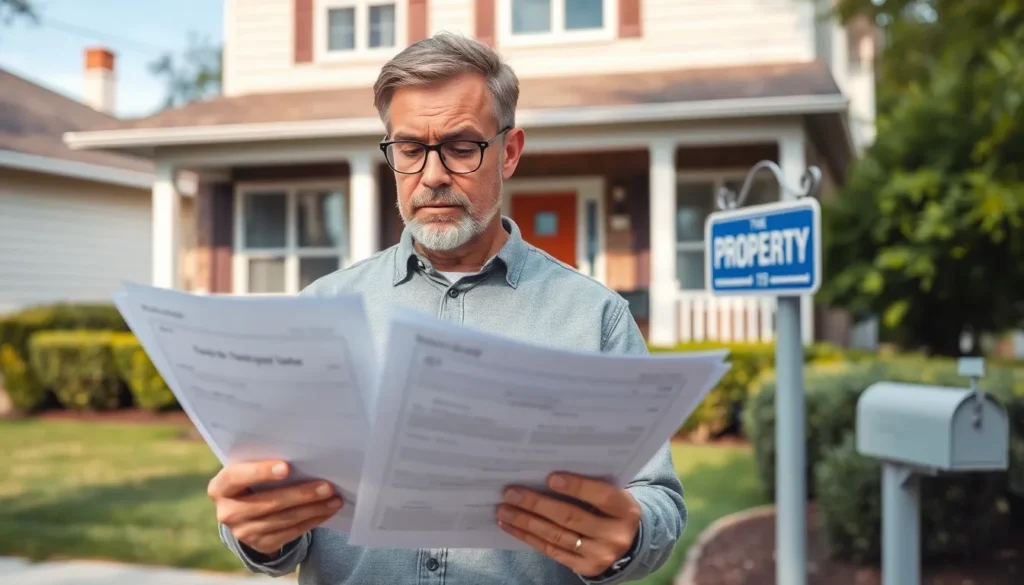Table of Contents
ToggleImagine walking into your home and having it greet you like an overly enthusiastic puppy. Smart home upgrades make this dream a reality, turning mundane living spaces into tech-savvy havens. From lights that dim with a simple voice command to thermostats that know when you’re too hot to handle, these upgrades not only boost convenience but also add a sprinkle of magic to daily life.
Overview of Smart Home Upgrades
Smart home upgrades redefine daily living. Integrating features such as voice-activated lighting automates the environment, allowing individuals to control systems effortlessly. Intelligent thermostats manage temperature preferences, ensuring comfort throughout the day.
Convenience stands out as a primary benefit. Residents can use mobile apps to monitor security systems or adjust settings remotely. Technologies like smart locks enhance security, providing peace of mind whether individuals are home or away.
Energy efficiency plays a crucial role in these upgrades. Systems like smart thermostats optimize energy use, potentially reducing utility bills by 10% to 15%. Additionally, smart plugs and appliances can be programmed to operate during off-peak hours, further contributing to cost savings.
Connectivity among devices enhances functionality. Smart speakers, for example, serve as control hubs, allowing seamless communication between devices. As more homeowners adopt smart technologies, interoperability becomes increasingly important.
Upgrades also promote safety. Features like smart smoke detectors alert homeowners to dangers promptly, while security cameras provide real-time surveillance. Such innovations foster a sense of security in increasingly connected homes.
Investing in smart home upgrades leads to an enhanced lifestyle. With various options available, individuals can select upgrades that fit their unique preferences. Each upgrade contributes to a smarter, more efficient, and secure living environment.
Benefits of Smart Home Upgrades

Smart home upgrades offer significant advantages that elevate everyday living. These enhancements cater to modern lifestyles, providing countless benefits.
Enhanced Convenience
Smart home systems create an environment where convenience reigns supreme. Automated features allow users to control lighting, climate, and security systems from their smartphones. Voice-activated devices make it easy to adjust settings without lifting a finger. Users can create schedules for appliances, ensuring lights and devices operate at optimal times. Remote access provides peace of mind, enabling monitoring of security systems while away. Integration with ecosystems like Amazon Alexa or Google Assistant streamlines interactions. Daily tasks become effortless with the swipe of a screen or a simple command.
Improved Security
Enhanced security systems are a hallmark of smart home upgrades. Smart cameras offer real-time surveillance and notifications. Innovative doorbell cameras allow homeowners to see visitors without opening the door. Motion sensors alert users of unusual activity on their property. Smart locks enable keyless entry, eliminating the risk of lost keys. Remote unlocking capabilities provide quick access for trusted visitors. Notifications sent directly to devices keep homeowners informed about security status at all times. These features create a safer living environment, adding an extra layer of protection.
Energy Efficiency
Energy efficiency stands out as a major benefit of smart home upgrades. Smart thermostats adjust temperatures based on personal preferences and occupancy patterns. These devices optimize heating and cooling, leading to potential savings on utility bills. Energy-efficient appliances integrate seamlessly with smart systems, ensuring responsible usage. Users can monitor energy consumption through apps, making informed decisions about usage. Scheduling appliances during off-peak hours reduces costs and energy demand. Utilizing such smart technology promotes an eco-friendly lifestyle while maintaining comfort and convenience.
Types of Smart Home Upgrades
Smart home upgrades include various technologies that enhance functionality and convenience in living spaces. Below are some common types of smart home upgrades to consider.
Smart Lighting Solutions
Smart lighting solutions offer customizable control over home lighting. Users can adjust brightness, color, and schedules through mobile apps or voice commands. These devices promote energy savings by allowing users to automate lighting based on occupancy, reducing waste. For example, smart bulbs can be programmed to turn off automatically when no one is present in the room. Integration with platforms like Amazon Alexa or Google Assistant adds an extra layer of convenience, creating an easily navigable lighting environment.
Smart Thermostats
Smart thermostats simplify climate control and boost energy efficiency. These devices learn user preferences, adjusting temperatures accordingly throughout the day. Some models can even detect occupancy patterns, ensuring optimal energy use. By utilizing mobile apps, users can adjust settings remotely, whether at home or away. Statistically, homes with smart thermostats experience up to 10%-15% savings on heating and cooling bills, providing both comfort and financial benefits.
Home Security Systems
Home security systems now incorporate smart technology for heightened safety. Features include smart cameras, doorbell cameras, and motion detectors that provide real-time alerts. Integration with mobile devices allows homeowners to monitor their property from anywhere. Smart locks offer keyless entry, making it easier to manage access. Enhanced security measures can reduce the likelihood of break-ins, promoting peace of mind for residents.
Smart Appliances
Smart appliances revolutionize everyday tasks in the kitchen and beyond. Refrigerators with built-in cameras allow users to check contents remotely, helping with grocery planning. Dishwashers and washing machines now offer app controls for scheduling and monitoring cycles. With energy-efficient settings, these devices contribute to lower utility bills. As smart technology evolves, the convenience of automated cleaning and food management continues to improve, making daily chores more manageable.
Considerations Before Upgrading
Before diving into smart home upgrades, it’s crucial to assess several key factors to ensure a successful transition.
Budget and Costs
Setting a budget serves as the first step in planning upgrades. Smart devices vary widely in price, so defining an overall limit helps in selecting suitable options. For example, smart thermostats typically range from $100 to $250, while smart security systems may start around $200 and go up. Additional costs for professional installations also affect the budget. Finding deals or discounts on devices can ease the financial burden. Investing in quality upgrades ensures long-term functionality and value.
Compatibility with Existing Devices
Compatibility plays a significant role in the upgrading process. Checking whether new devices will integrate seamlessly with existing systems is vital. Many smart home devices utilize common protocols like Wi-Fi or Zigbee. Ensuring compatibility enhances overall system performance and user experience. Researching brand compatibility increases the likelihood of smooth installation and operation. Products designed to work as part of the same ecosystem offer better communication and control.
Installation Process
Understanding the installation process simplifies the transition to a smart home. Some devices require professional installation, while others allow for DIY setups. Reviewing user manuals or installation guides provides clarity on installation requirements. Wireless devices usually feature straightforward setups through mobile apps. Hiring professionals ensures proper integration, but homeowners might save on costs with simpler installations. Assessing experience levels regarding technical tasks influences the chosen installation method.
Smart home upgrades offer a remarkable way to enhance everyday living. By embracing these technologies, individuals can enjoy unparalleled convenience energy efficiency and improved security. The integration of smart devices transforms ordinary spaces into intelligent environments that cater to personal preferences and lifestyles.
With careful planning and consideration of budget compatibility and installation methods homeowners can seamlessly transition to a smarter home. This investment not only elevates comfort but also contributes to a more efficient and secure living experience. As technology continues to evolve the possibilities for smart home upgrades will only expand making it an exciting time for those looking to enhance their living spaces.







